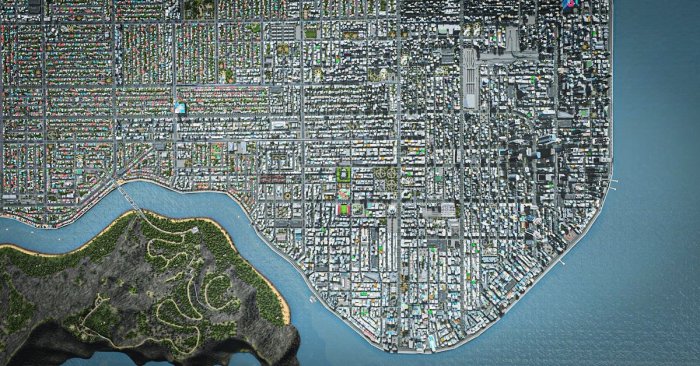Cities Skylines 2 Grid is a comprehensive guide to the art and science of grid planning in the popular city-building simulation game, Cities Skylines 2. Whether you’re a seasoned player looking to optimize your city’s layout or a newcomer seeking to master the basics, this guide will provide you with the knowledge and tools you need to create thriving and visually appealing cities.
From the fundamentals of grid design to advanced techniques for traffic management and land use planning, this guide covers everything you need to know about grid planning in Cities Skylines 2. With clear explanations, real-world examples, and practical tips, you’ll learn how to design and implement grids that not only improve the efficiency and functionality of your cities but also enhance their aesthetic appeal.
Grid Planning and Design

Grid planning is a fundamental aspect of city design in Cities Skylines 2. It involves organizing a city’s layout into a network of regularly spaced streets and blocks. Grid planning offers several advantages and disadvantages, and understanding these factors is crucial for effective city planning.
Advantages of Grid Systems
- Efficient Land Use:Grids maximize land utilization by creating rectangular blocks that can be easily divided into smaller parcels for development.
- Simplified Navigation:Grids provide a clear and intuitive layout, making it easier for residents and visitors to navigate the city.
- Reduced Congestion:By creating multiple parallel routes, grids distribute traffic flow more evenly, reducing congestion at intersections.
Disadvantages of Grid Systems
- Monotony and Lack of Character:Grids can sometimes result in a monotonous and repetitive urban landscape, lacking visual interest.
- Traffic Bottlenecks:Intersections in grid systems can become bottlenecks during peak hours, leading to traffic congestion.
- Limited Flexibility:Grids can limit flexibility in city design, making it difficult to accommodate irregular-shaped buildings or natural features.
Traffic Management: Cities Skylines 2 Grid

Grid design plays a significant role in traffic management. By distributing traffic flow evenly, grids can reduce congestion and improve overall traffic efficiency.
Impact of Grid Design on Traffic Flow
- Intersections:The spacing and layout of intersections in a grid system can significantly impact traffic flow. Too many or poorly placed intersections can create bottlenecks.
- Block Size:The size of blocks in a grid can affect traffic flow. Larger blocks reduce the number of intersections, while smaller blocks increase the number of potential congestion points.
- One-Way Streets:Incorporating one-way streets into a grid system can improve traffic flow by eliminating left turns and reducing conflicts at intersections.
Land Use and Zoning

Grid planning provides a framework for efficient land use and zoning. By dividing the city into regular blocks, grid systems simplify the process of allocating land for different purposes.
Role of Grid Planning in Land Use Allocation, Cities skylines 2 grid
- Residential Zoning:Grids make it easier to designate areas for residential development, ensuring a balanced distribution of housing throughout the city.
- Commercial and Industrial Zoning:Grids provide designated areas for commercial and industrial activities, creating hubs for economic growth.
- Mixed-Use Zoning:Grids allow for the integration of different land uses within a single block, promoting walkability and reducing the need for car travel.
FAQ Corner
What are the benefits of using a grid system in Cities Skylines 2?
Grid systems offer several advantages, including improved traffic flow, more efficient land use, and a more visually appealing city layout.
How do I design an effective grid system?
To design an effective grid system, start by considering the size and shape of your city, as well as the terrain. Use a variety of grid sizes and orientations to create a layout that is both functional and visually appealing.
How can I use grid planning to improve traffic flow?
By carefully planning your grid system, you can create a layout that minimizes traffic congestion. Use one-way streets, roundabouts, and other traffic management techniques to optimize the flow of traffic throughout your city.

